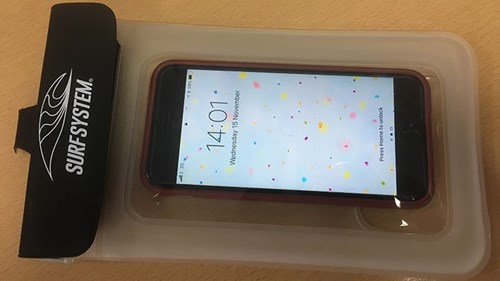Sea safety essentials
The 6 sea safety must haves!
When it comes to safety gear on a powerboat there’s a lot of advice to consider.
Rachel Andrews, RYA Chief Instructor for Motor Cruising and Power, gives us the lowdown on her
6 safety must-haves at sea with her top tips on getting the most from the equipment:
1. Life jackets
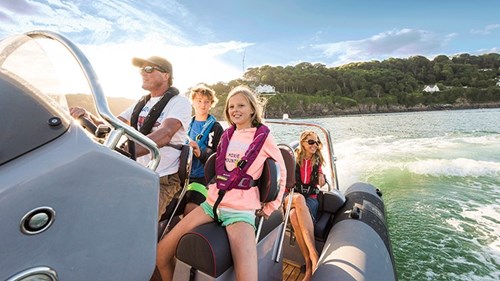
Image credit Spinlock
Worn correctly a life jacket could save your life. It should turn an unconscious person face-up and requires no action by the user to maintain this position. They come fitted with manual or auto-inflation firing heads and are very comfortable nowadays. It is important that you find one that fits snuggly and many companies now produce children’s versions too.
Top tips:
• Check them over for signs of wear and tear and get them serviced in line with the manufacturer’s recommendations (usually annually).
• Addition accessories such as a spray hood and light should be considered depending on the type of boating you do and the areas you are thinking of visiting. It is essential that life jackets are fitted correctly and crotch straps are used if fitted.
2. Kill cord
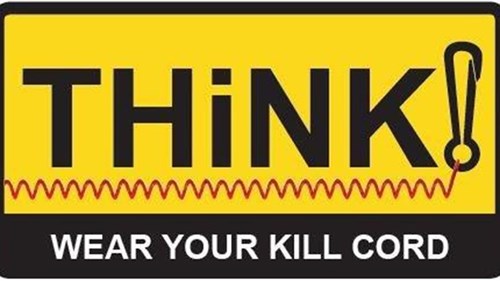
The kill cord saves lives – but only if worn properly. The red coiled lanyard has a quick release fitting and one end and a clip at the other. It should be worn at all times when the engine is running. If the driver is dislodged the engine automatically cuts out. Clip it around the knee and back on itself. Most boats will not start without the kill cord in place, so we strongly advise having a second kill cord on board to restart the boat in case driver and kill cord accidentally go overboard.
Top tips:
• Kill cords are constantly out in the elements, so we recommend checking them regularly. Feel the length of the plastic coating for signs of degradation/cracking; check for colour fade; corrosion on metal parts such as the clip and crimps; loss of elasticity – and replace early to avoid failure.
• Ensure it is the correct fit for the switch – buying a manufacturer’s own brand is advised. It should connect snugly, but without forcing, and should release under a 15kg/30lb break strain – anything that is harder to connect or release should be replaced.
• Carry a spare and replace regularly.
3. VHF radio

Radios are a vital sea safety equipment for staying in contact with the coastguard. Although in many instances a mobile phone may work, it is not designed for the marine environment and coverage may be non-existent just when you need it most. Knowing how to use a radio correctly and knowing which channels to use will prevent unnecessary transmissions which could block out a distress call. It also means you’ll be able to get your information across quickly and easily.
Top tips:
• If you carry a waterproof, preferably floating, handheld marine VHF radio you will be able to call for help if you end up parted from the boat, (so long as help is within line of sight).
• The VHF should be registered with Ofcom and the user needs an operator’s certificate.
• Did you know you can call National Coastwatch on Channel 65 for your radio check to reduce traffic on Channel 16. They are always happy to help.
4. Personal Locator Beacon (PLB)
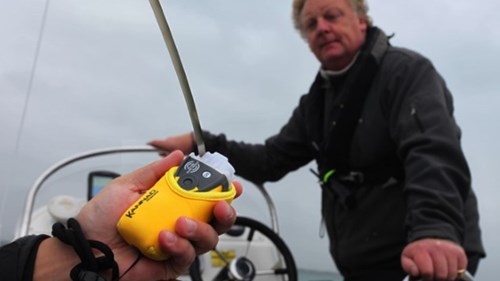
A PLB is a great sea safety kit to carry on your person when on your boat. If activated they notify the coastguard of your position, which assists search and rescue services to accurately pinpoint where you are. These are especially useful if you are out of range of VHF contact or mobile phone signal. These can be used for any activity afloat, whether on your own vessel or someone else’s as they are registered to the individual and not linked to a boat. Once activated, the PLB has a minimum of 24-hour battery life.
Top tip:
• Remember to register individual units with the coastguard and amend your registered details if any of your emergency contact details change.
5. Distress Flares
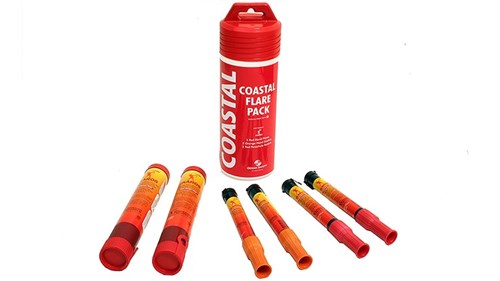
Flares are valuable for ‘final mile’ locating by day and by night and in poor visibility. It is worth carrying at least three flares on board.
Top tips:
• Flares should be stored in a dry container that is insulated from being bumped around and is easy to access, and stowed away from any sources of ignition.
• Keep a pair of heavy duty gloves with the flares to wear should you need to activate them.
6. Mobile phone in a waterproof case
This is useful as a back-up sea safety equipment, and should be carried on your person rather than stowed in a locker where it may be difficult to access should the need arise. Be mindful that mobile coverage is not great afloat so you should always have a VHF Radio as well. Mobile phones should be considered a back-up method of communication, remember that if you call the coastguard from a phone, only they hear you. However, if you do so from a VHF radio, everyone who is listening to that frequency in the vicinity can respond to your call for help.
Top tip:
• Consider taking a battery power bank to top up your charge
An article created by
RYA.






